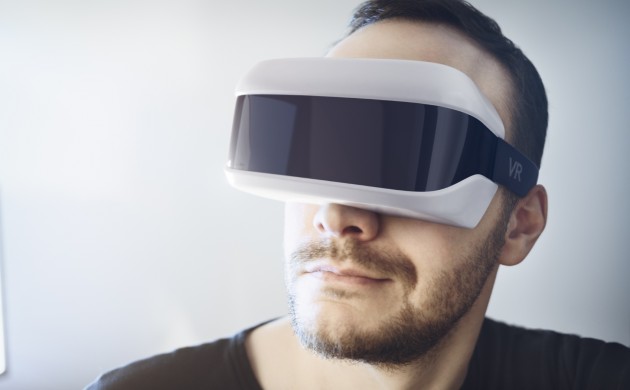Friday 22nd January 2016
As you've probably already noticed this year, we've been very excited lately by the prospect of consumer-ready virtual reality and how it will affect the art world, both in terms of the artists and the viewers. Rather than focusing on any particular artist today, we're going to be exploring the possibilities and limitations of the medium itself, and where it might be going in the future.
For those of you unaware of the latest developments, a number of companies including Google, Facebook, HTC, Valve, Microsoft and Samsung are all heavily investing in virtual reality technology, whether in the form of buying startups such as Oculus (as Facebook did) or by developing their own in-house technologies. This has lead to a huge range of projects that are about to be available for the general consumer - or in the case of Oculus, were already available in time for the holiday season in 2015. Essentially, a virtual reality (VR) rig is comprised of a headset with screens placed right before the eyes, built-in headphones and accelerometers to measure how your head moves in 3D space.
This allows for an unprecedented level of immersion in a completely constructed world, where the possibilities for artistic creation are limited by nothing more than the artist's imagination (and, for the moment, the lack of a sense of smell or touch, but these two are not always common elements in artistic projects). While the technology is still fairly expensive, the prices will be dropping rapidly as the various competitors roll out their entries, and many companies are already working with content creators such as artists and video game designers to ensure there is enough VR content to meet the demand.
Another interesting take on the VR environment is something called augmented reality (AR), where the viewer isn't completely immersed an alternative environment but rather gets a blend of virtual and real world views. This may turn out to have the largest artistic potential, as the entire structure of narratives and viewpoints can literally be questioned, instead of merely intimated. Four people all looking at the same real world object could be given completely different yet related and constantly shifting viewpoints shaped by the augmented content their AR equipment shows them. Combine this with some kind of shared online space and the possibilities start to grow exponentially - and that's just one example.
Virtual and augmented reality promises to be one of the most exciting artistic developments of 2016 and onwards, and as the technology scales upwards and the cost scales down, we're going to be looking at a brave new and completely constructed world. We can hardly wait!
Posted on January 22nd 2016 on 12:34am
 As you've probably already noticed this year, we've been very excited lately by the prospect of consumer-ready virtual reality and how it will affect the art world, both in terms of the artists and the viewers. Rather than focusing on any particular artist today, we're going to be exploring the possibilities and limitations of the medium itself, and where it might be going in the future.
As you've probably already noticed this year, we've been very excited lately by the prospect of consumer-ready virtual reality and how it will affect the art world, both in terms of the artists and the viewers. Rather than focusing on any particular artist today, we're going to be exploring the possibilities and limitations of the medium itself, and where it might be going in the future.



